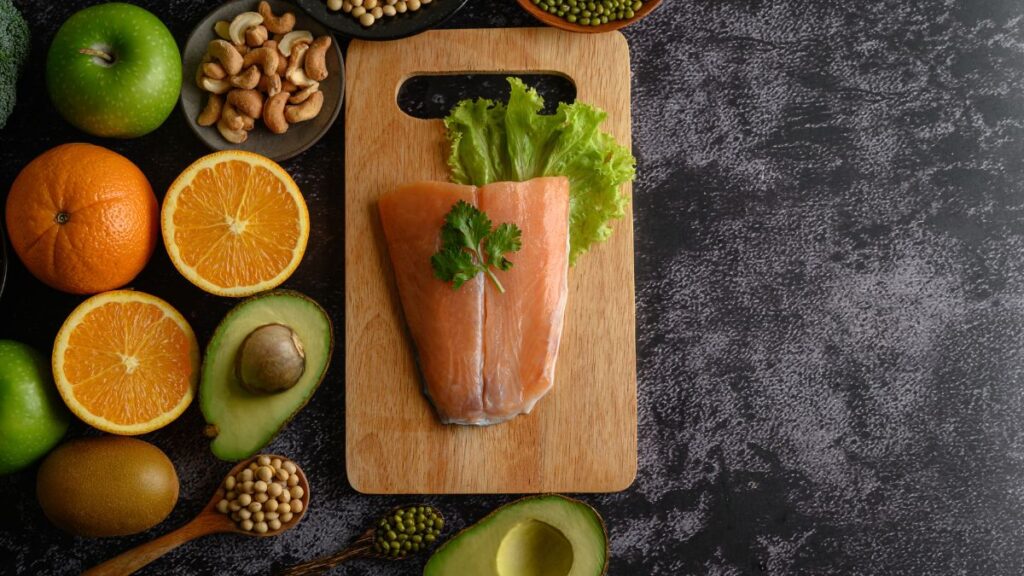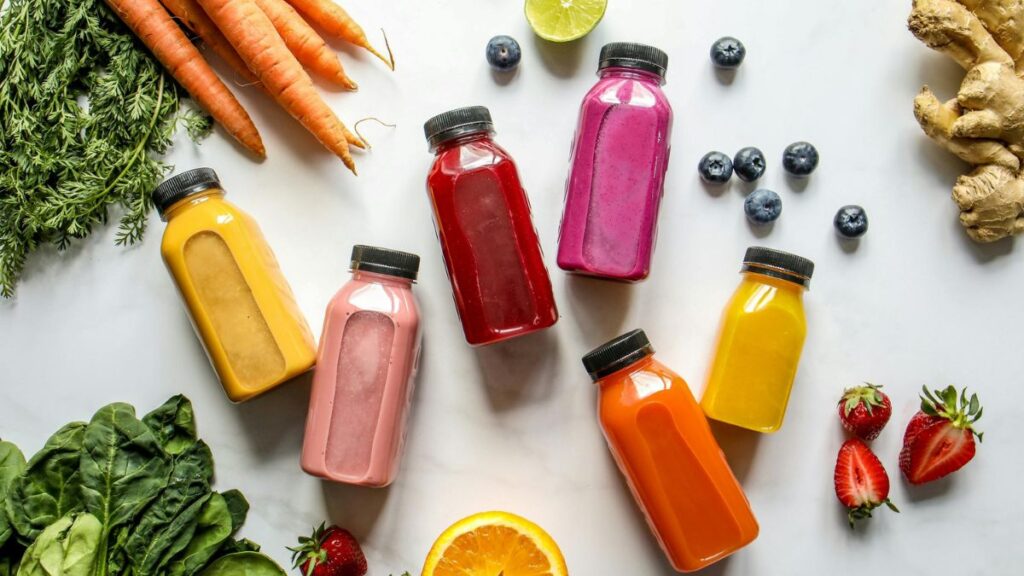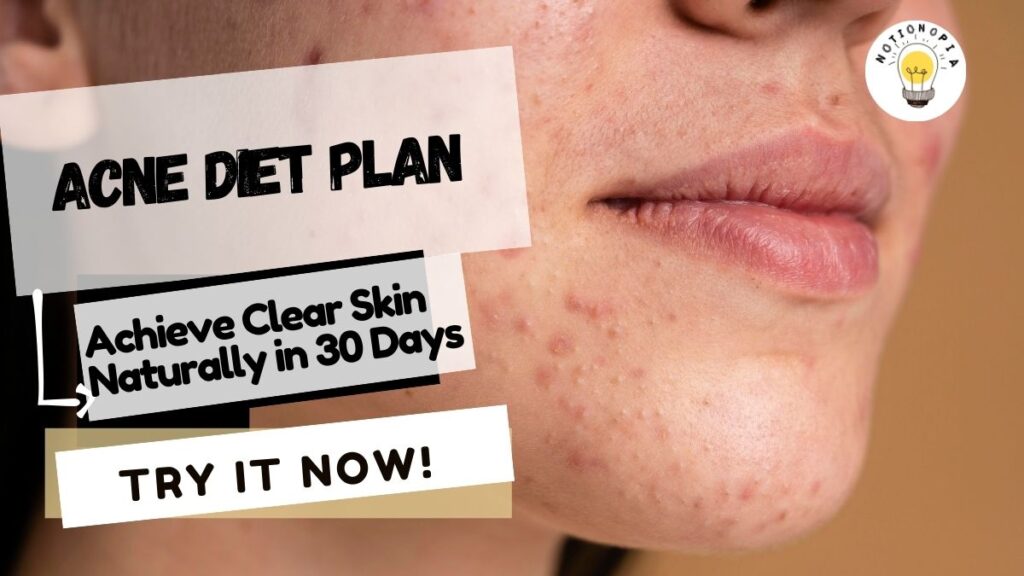Acne is a common but challenging skin condition that can often impact self-esteem and overall well-being. While numerous factors contribute to acne, research shows that a healthy, well-balanced diet can play a pivotal role in improving skin health and reducing acne. By adopting a 30-day structured acne diet plan, you can nourish your skin from within, improve its texture, and pave the way for a clearer complexion. for an acne diet plan.
In this detailed guide, we’ll explore what acne is, its causes, how diet affects acne, and a comprehensive 30-day meal plan designed to help you achieve acne-free skin naturally.
Table of Contents
What Is Acne?
Acne is a chronic skin condition that develops when hair follicles become clogged with oil, dead skin cells, and bacteria. This results in inflammation and the formation of pimples, blackheads, whiteheads, and, in severe cases, cysts. While it is most common during adolescence, acne can persist or appear in adulthood, making it a condition that requires long-term management.
Causes of Acne
Understanding the underlying causes of acne is crucial for managing it effectively. Here are the key contributors:
1. Hormonal Fluctuations:
Hormonal changes during puberty, menstruation, pregnancy, or menopause can increase sebum (oil) production, clogging pores and triggering breakouts.
2. Diet:
Foods high in sugar, unhealthy fats, and dairy may exacerbate acne by increasing inflammation, triggering hormonal imbalances, and causing blood sugar spikes. so must follow an acne diet plan.
3. Stress:
Stress stimulates the production of cortisol, a hormone that can worsen inflammation and acne.
4. Genetics:
A family history of acne increases the likelihood of developing the condition.
5. Poor Skincare Habits:
Using products that clog pores, not cleansing thoroughly, or over-exfoliating can contribute to acne flare-ups.
Signs and Types of Acne
Recognizing the symptoms and types of acne can help determine the right course of action:
Common Signs of Acne:
Blackheads: Open pores clogged with oil and dead skin, turning black due to oxidation.
Whiteheads: Closed pores clogged with oil, remaining under the skin.
Pimples: Inflamed, red bumps with pus-filled tips.
Cysts: Deep, painful lumps under the skin filled with pus.
Types of Acne:
1. Comedonal Acne: Includes blackheads and whiteheads.
2. Inflammatory Acne: Red, swollen pimples caused by bacterial infection.
3. Cystic Acne: A severe form of acne that forms deep, pus-filled cysts.
4. Hormonal Acne: Often found along the jawline and chin, triggered by hormonal imbalances.
How Diet Affects Acne
Your skin reflects what you eat. Diet significantly influences acne development by affecting inflammation, hormone levels, and overall skin health. Here’s how:
1. Inflammation:
Certain foods, like those high in sugar and refined carbs, can trigger inflammation, leading to acne.
2. Hormonal Regulation:
Diet impacts the production of insulin and hormones like androgens, which influence oil production.
3. Gut Health:
A healthy gut reduces systemic inflammation and boosts overall skin health.
Tips to Follow Before Starting the Acne Diet Plan
1. Consult a Healthcare Provider:
Always check with a doctor or nutritionist before making major dietary changes, especially if you have underlying health conditions.
2. Stay Hydrated:
Drinking 8–10 glasses of water daily helps flush out toxins and keep your skin hydrated.
3. Track Your Progress:
Maintain a journal to log your meals, skin changes, and overall progress.
4. Be Patient:
Results won’t appear overnight. Consistency is the key to success.
30-Day Acne Diet Plan
The following meal plan is designed to include anti-inflammatory, nutrient-dense foods while excluding potential acne triggers.

Week 1: Foundation for Clear Skin
Day 1:
Breakfast: Greek yogurt with mixed berries, topped with chia seeds.
Lunch: Grilled chicken salad with mixed greens, avocado, and olive oil dressing.
Dinner: Baked salmon with quinoa and steamed broccoli.
Snacks: Carrot sticks with hummus; apple slices with almond butter.
Day 2:
Breakfast: Spinach smoothie with almond milk, banana, and protein powder.
Lunch: Quinoa bowl with black beans, corn, and cilantro-lime dressing.
Dinner: Turkey meatballs with zucchini noodles.
Snacks: Mixed nuts; celery with guacamole.
Week 2: Strengthening Nutrient Intake for acne diet plan

Day 8:
Breakfast: Smoothie with kale, mango, banana, and coconut water.
Lunch: Grilled veggie and quinoa salad.
Dinner: Baked chicken with sweet potato and steamed green beans.
Snacks: Bell pepper slices with guacamole; orange slices.
Day 9:
Breakfast: Greek yogurt with walnuts and blueberries.
Lunch: Turkey and avocado lettuce wrap.
Dinner: Baked tilapia with brown rice and spinach.
Snacks: Cucumber slices; apple slices with peanut butter.
Weeks 3 & 4: Maintaining and Refining
Day 15:
Breakfast: Scrambled eggs with spinach on whole-grain toast.
Lunch: Black bean and quinoa salad with avocado.
Dinner: Baked cod with steamed green beans.
Snacks: Carrot sticks with hummus; mixed nuts.
Day 22:
Breakfast: Smoothie bowl with spinach, banana, almond milk, and granola.
Lunch: Stir-fried chickpeas with veggies.
Dinner: Grilled turkey burger with roasted sweet potatoes.
Snacks: Bell pepper slices; mixed berries.
Foods to Include for Clear Skin
- Fruits and Vegetables:
Rich in vitamins (A, C, E) and antioxidants. Examples: berries, spinach, carrots, and kale.
- Whole Grains:
Reduce blood sugar spikes. Examples: quinoa, oats, and brown rice.
Anti-inflammatory properties. Examples: avocado, nuts, seeds, and olive oil.
- Probiotics:
Enhance gut health. Examples: yogurt, kefir, and fermented foods.
Foods to Avoid for Healthy Skin
- Refined Sugars:
Spike insulin levels, triggering acne. Examples: candies, sodas, and baked goods.
- Dairy Products:
May disrupt hormones and increase inflammation.
- Processed Meats:
Contain preservatives linked to inflammation. Examples: bacon, sausages, and hot dogs.
- High-Glycemic Index Foods:
Cause rapid blood sugar spikes. Examples: white bread, pasta, and sugary cereals.
- Alcohol and Caffeine:
Dehydrate skin, making it prone to wrinkles and dullness.
Conclusion
Achieving acne-free skin takes time, dedication, and Acne diet plan and consistency. By following this 30-day acne-free diet plan, avoiding trigger foods, and embracing healthier habits, you can naturally nourish your skin from within and enjoy long-term improvements in skin health. Pair this plan with proper hydration, stress management, and a solid skincare routine for optimal results.
FAQ
1. Can diet alone clear acne?
A1: While diet can significantly impact skin health, it’s important to also maintain a good skincare routine and consult with a dermatologist for severe cases.
2. How long does it take to see results from an acne-free diet?
A2: It varies from person to person, but many people start to see improvements within a few weeks.
3. Are there any supplements that can help with acne?
A3: Supplements like zinc, omega-3 fatty acids, and probiotics can support skin health, but it’s best to get nutrients from whole foods.
4. Can I eat any sweets on an acne-free diet?
A4: It’s best to limit sugary foods, but occasional treats in moderation are okay.
5. What should I do if my acne doesn’t improve with diet changes?
A5: If your acne persists, consult with a healthcare provider or dermatologist to explore other treatment options.
6. What foods are best for clearing acne?
High-fiber foods can help reduce inflammation and blood sugar spikes. Steel cut oats, beans, apples, and carrots are all excellent options for helping keep your skin clear. Fresh fruits and vegetables are among the best foods for acne, thanks to their high levels of antioxidants and vitamins.


